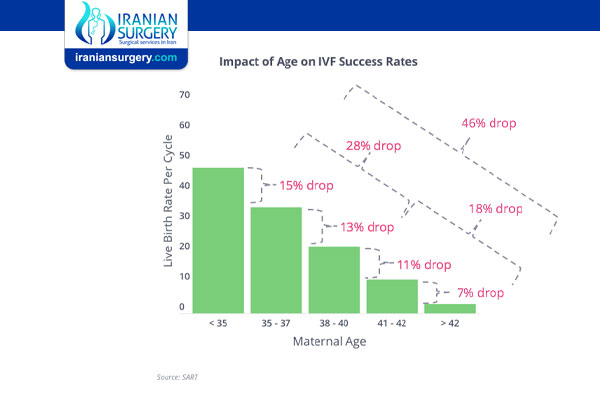Blastocyst Success Rates by Age
Blastocyst Success Rates by Age
Since fertility rates tend to decline with age, IVF with blastocyst transfer success rates also follow a similar pattern. In this article, we’re going to take a look at some reports on IVF with blastocyst transfer success rate by age.
Blastocyst transfer success rates are potentially confusing Almost all clinics that do extended embryo culture and blastocyst transfer IVF are selective in choosing patients eligible for it. Patients selected for blastocyst transfer tend to be younger and have more embryos that look better under the microscope (better embryo “quality”). Therefore, we should expect success rates to be higher in this selected population as compared to the rates in “unselected” patients.
A recent study analyzing 21,301 normally fertilized zygotes from 4952 couples found that the woman’s age had an impact on the overall blastocyst rate. In this study, women aged 23–36 years had the highest average blastulation rate (59%, range 55–61%), but compared with the previous women, the blastocyst rate was significantly decreased for the two ‘extreme’ age groups: 48% in women aged 20–22 years (P < 0.05) and 54% in women aged 37–43 years (P < 0.05), with a significant decrease (48%) in women aged 41–43 years (P < 0.05). Further studies including a higher number of young women would be mandatory to confirm such observation.
Here are live birth success rates for day 5 blastocyst transfer cases in women 35-42 reported by Advanced Fertility:
Female Age Under 35 | |||
Transfer | Number of | Clinical Pregnancy Rate | Live Birth Rate |
Day 3 | 41 | 46.6% | 12.20% |
Day 5 | 174 | 68.5% | 56.30% |
Female Age 35-37 | |||
Transfer | Number of | Clinical Pregnancy Rate | Live Birth Rate |
Day 3 | 34 | 43.4% | 20.60% |
Day 5 | 89 | 63.8% | 51.70% |
Female Age 38-40 | |||
Transfer | Number of | Clinical Pregnancy Rate | Live Birth Rate |
Day 3 | 51 | 39.6% | 5.90% |
Day 5 | 63 | 63.0% | 46% |
Female Age 41-42 | |||
Transfer | Number of | Clinical Pregnancy Rate | Live Birth Rate |
Day 3 | 39 | 23.9% | 5.10% |
Day 5 | 22 | 41.9% | 40.90% |
About Iranian Surgery
Iranian surgery is an online medical tourism platform where you can find the best doctors and fertility specialists in Iran. The price of IVF in Iran can vary according to each individual’s case and will be determined by an in-person assessment with the doctor.
For more information about the cost of IVF in Iran and to schedule an appointment in advance, you can contact Iranian Surgery consultants via WhatsApp number 0098 901 929 0946. This service is completely free.
Source:
https://advancedfertility.com/success/blastocyst-success-rates/


